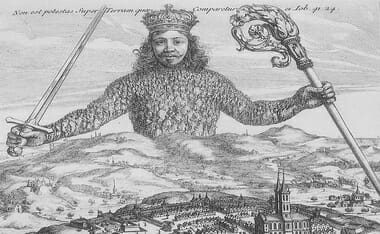In 416BC, the physician Ctesias set out from his native town of Cnidus to attend the Persian King Darius II. There he stayed for eighteen years, and learned of many wonderful things during his time at court. Upon returning to Cnidus, he wote a book of his experiences which he called the Indica. In it is the earliest surviving written account of a Unicorn:
“There are in India certain wild asses which are as large as horses, and larger. Their bodies are white, their heads are dark red, and their eyes dark blue. They have a horn on the forehead which is about eighteen inches in length. The dust filed from this horn is administered in a potion as a protection against deadly drugs.”
The great philospher Aristotle, whose words were taken so seriously that they were widely held as gospel truth a thousand years later, could have destroyed the infant legend with a sentence, whatever the truth of the matter. However, he confirms its existence by a passing comment, which, though flawed in content, proved that this great man of learning clearly believed there was such a creature.
“We have never seen an animal with a solid hoof and two horns, and there are only a few that have a solid hoof and one horn, as the Indian Ass and the Oryx.”
The “Indian Ass” is none other than Ctesias’ Unicorn. Pliny the Elder, in the first century AD, mentions Unicorns, saying of them that there is:
“…An exceedingly wild beast called the Monoceros, which has a stag’s head, elephant’s feet, and a boar’s tail, the rest of its body being like that of a horse. It makes a deep lowing noise, and one black horn two cubits long projects from the middle of its forehead. This animal, they say, cannot be taken alive.”
There are some indications here that he was confusing the creature with a rhinoceros, a creature known to his race but often confused because the rhino was a known animal and the Unicorn was not! It never crossed the minds of many scholars that they might be talking of one and the same creature!
The same mistake has been attributed to the Roman scholar Aelian, who lived some five hundred years after Aristotle. He wrote a book about animals that mentioned the Unicorn quite frequently. In one passage he states:
“I have found that wild asses as large as horses are to be found in India. The body of this animal is white, except on the head, which is red, while the eyes are azure. It has a horn on the brow, about one cubit and a half in length, which is white at the base, crimson at the top, and black between. These variegated horns are used as drinking cups by the Indians. …It is said that whosoever drinks from this kind of horn is safe from all incurable diseases such as convulsions and the so-called holy disease, and that he cannot be killed by poison.”
Elsewhere he says,
“They say that there are mountains in the interior regions of India which are inaccessible to men and therefore full of wild beasts. Among these is the Unicorn, which they call the kartajan [Sanscrit: Lord of the desert]. This animal is as large as a full-grown horse, and it has a mane, tawny hair, feet like those of an elephant, and the tail of a goat. It is exceedingly swift of foot. Between its brows there stands a single black horn tapering to a very sharp point. Where other animals approach it it is gentle, but it fights with those of its own kind. It seeks out the most deserted places and wanders there alone.”
Other notable Greeks and Romans have noted the unicorn: Julius Caesar for example, who said they could be found in the Hercynian Forest. However, for all the weight these mighty scholars and writers wielded in the literary world, the Unicorn was not well known among the ordinary people. It was yet a beast of books and libraries, and there it might have dwindled into obscurity and never been known to us….
….The unicorn had actually long been a Royal Beast associated with kings and rulers.
Aelian had said that only great men could own the cups made from his horn, and Philostatus had stated that only the kings of India might hunt them. The Physiologus mentions that the captive unicorn is taken before the King, and the Chinese Ki-lin has always been associated with Emperors. The Bible (Daniel chapter 8) relates the following vision:
“And behold, a he-goat came from the West on the face of the whole earth, and touched not the ground; and the goat had a notable horn between his eyes.”
The goat in question is later interpreted as “the king of Grecia”, Alexander the Great, and it is also interesting to note that Alexander was once gifted with a unicorn by Queen Candace as tribute. We know that Caesar also wrote of unicorns.  Ghengis Khan, about to invade India, saw a unicorn and took it as an omen that India was not to be his. He turned back immediately….
Ghengis Khan, about to invade India, saw a unicorn and took it as an omen that India was not to be his. He turned back immediately….







